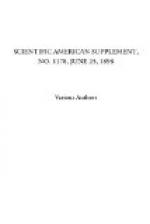It is seldom that the exemplifying device of the pioneer inventor is a perfect one. Later developments and improvements by the original patentee, or by others, must be depended on to bring about perfection of structure. Those who improve the structure are as much entitled to patents upon their specific improvements in the device as was the original inventor entitled to his patent for the fundamental device. These improvers are secondary inventors, and are not entitled to invoke the doctrine of mechanical equivalents. The secondary inventor did not bring about a new result, but his patent was for new means for producing the old result. His patent is for this improvement in means, and his claim will be closely scrutinized in court, and he will be held to it, subject only to formal variations in structure. The justice of thus restricting the claim of the secondary inventor must be obvious, in view of the fact that if the doctrine of mechanical equivalents were applied to his claim, then the fundamental device on which he improved would probably infringe upon it, which would be an absurdity. It is thus seen that the pioneer inventor may have a claim so broad in its terms that its terms cannot be escaped; that he may invoke the doctrine of equivalents and have his claim dominate structures not directly responding to the terms of the claim; that the secondary inventor, who improves only the means, is limited to the recited means and cannot invoke the doctrine of equivalents. But within this general view, sight is not to be lost of the fact that secondary inventors may be pioneers within certain limits. They are not the first to produce the broad ultimate result, but they may be pioneers in radically improving interior or sub-results, and they may thus reasonably ask for the application of the doctrine of equivalents to their claims within proper limits. The matter often becomes quite complicated, for it is sometimes difficult to determine as to what is the result in a given machine, for many machines consist, after all, of a combination of subordinate machines. Thus the modern grain-harvesting machine embodies a machine for moving to the place of attack, a machine for cutting the grain, a machine for supporting the grain at the instant of cutting, a machine for receiving the cut grain, a machine for conveying the cut grain to a bindery, a machine for measuring the cut grain into gavels, a machine for compressing the gavel, a machine for applying the band, a machine for tying the band, a machine for discharging the bundle, a machine to receive the bundles and carry them to a place of deposit, and a machine to deposit the accumulated bundles. The machine would be useful with one or more of these sub-machines omitted, and each machine may be capable of performing its own individual results alone or in other associations. Pioneership of invention might apply to the main machine, or to the sub-machines, or even to the sub-organization within the sub-machines.




